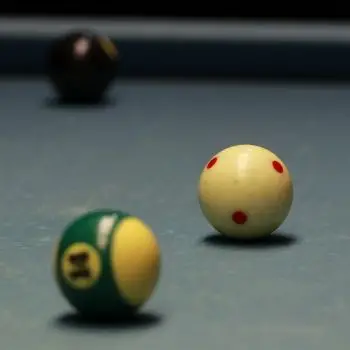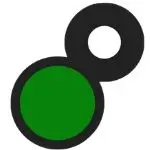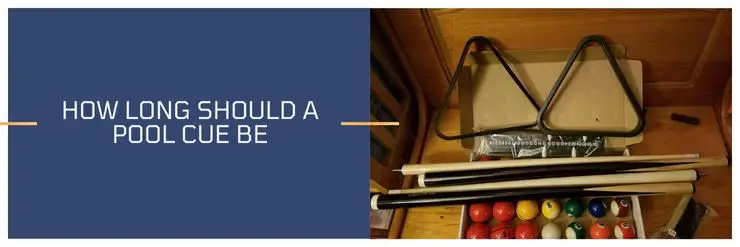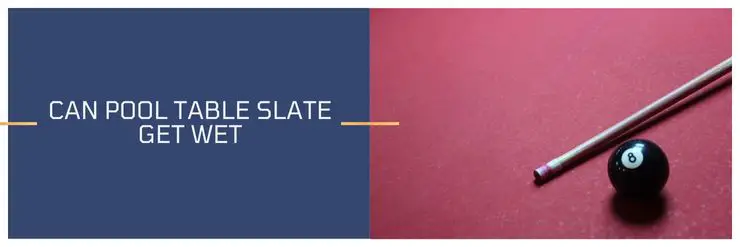Like every other game, the billiard has its fouls and regulations for playing. Some of these fouls can get confusing, though, as they are not the same as you will find in other games. In the middle of a game, you might find yourself asking what is ball in hand in pool?
Ball in hand in pool means a player can position the cue ball anywhere on the table. This placement can sometimes be restricted to areas behind the head string. It’s usually permitted after the cue ball rolls off the playing surface. Failure of an opponent to hit an object ball can also justify ball in hand. Several fouls necessitate ball in hand in pool.
It is essential to know all these instances to make informed calls in the game. The right knowledge would ensure no opponent cheats you. You would also learn how to differentiate it from other foul cases in this article.
What is Ball in Hand in Pool?
Ball in hand in pool allows a player to take the cue ball in hand and place it in any position. The cue ball placement can be limited to behind the head string depending on the game’s rules.
In break shots, the head string rule also applies. This kind of positioning of ball in hand is called a ball in hand anywhere in the kitchen.
In the game of pool, ball in hand is a favorable play for any player. It can be a deciding factor to whether you win or not. It is like getting a free throw in basketball or a penalty shot in hockey. It increases your odds of winning.
However, you don’t have to get disheartened because your opponent gets a ball in hand. While it doesn’t mean that you would lose the game, it is better to avoid fouls that lead to the ball in hand.
So, you need to know what causes ball in hand. It would also help you know when you have the advantage of a ball in hand.

What Causes Ball in Hand?
Different situations can result in ball in hand in pool. Some of the causes of ball in hand depend on the type of game you play and the agreed rules. However, most of the causes listed below are pretty general.
You can call for a ball in hand if any of these happen in your pool game;
- The cue ball goes into a pocket, falls on the floor, or leaves the playing surface in any way.
- Your opponent fails to hit the object ball. If they are shooting stripes, they have to hit a striped ball first. If you think your opponent is knowingly trying to take a bad shot in a game, call for a referee to check the shot. It is unsportsmanlike to try to take a bad hit knowingly.
- You didn’t hit a rail after making contact with the object ball. ‘Any ball (including the cue ball) must go to rail after legal contact’ is a rule you should always keep in mind. Note that pocketed balls count for a rail.
- Scooping the cue ball over another ball in a foul that causes ball in hand. Accidental miscuing is not inclusive, though, unless other rules were violated.
- The object ball is frozen to a rail, and your opponent wants to take a safety choice. Ensure that a third party confirms that the ball is frozen before the shot is taken and stick to the game’s other rules.
- Your opponent is getting illegal coaching. Note that coaching does not include reminders to mark a pocket or point out a foul.
- Movement of the cue ball, either accidentally or not, is a foul that results in ball in hand. Other balls moved can be replaced after or before a shot, depending on when it moved. However, dropping mere chalk on the cue ball would count as a ball-in-hand foul.
- The cue ball doesn’t touch anything during a shot.
When playing, it is essential to remember that the cue ball is always ‘alive.’ If it comes in contact with any ball when you are replacing it in a ball in hand situation, it automatically becomes a foul, giving your opponent the ball in hand. Even the hand with which you are holding the cue ball should not touch other balls.
Therefore, you should be very careful when picking or placing the cue ball during a ball in hand. You can have your coach place it for you if you are in a tight spot.
Where can You Place Ball in Hand in Pool?
Another controversial question with a ball in hand is where you should place the ball in hand when playing. The simple answer is that it depends on the game. However, ball in hand generally means you can place the ball ANYWHERE on the table.
But, in an 8-ball game, when the foul is a scratch on the break, ball in hand is only allowed behind the head string. In the continuous pool, the ball in hand is always behind the head string. However, 9-ball and 10-ball allow for a ball in hand placement anywhere.
Therefore, it is essential to understand the game you are playing and have it clear with your opponent how it works before you begin.
When You Scratch in Pool is it a Ball in Hand?
Generally, a scratch in pool results in a ball in hand for your opponent. However, the type of scratch might determine the placement of the cue ball. A scratch on a break in 8-ball would mean that the cue ball would be placed behind the head string.
If you’d like detailed information on What is a Scratch in Pool, I wrote an article about it.
If you’d also like to know more about scratching on 8 ball, see the article I wrote on the subject.
In most games, the ball in hand is placed anywhere. However, it would be best if you agreed about it with your opponent before the game began. Note that if the 8-ball and cue ball is pocketed or driven off the table during a legal 8-shot, your opponent forfeits the game.
Ball in Hand VS Behind the Line
It should no longer be a question of ‘Is there ball in hand in professional pool? It is clear that there is. You only need to be sure of when it is allowed in your game. It is at this point you have the distinction of ball in hand and behind the line.
Behind the line is used in 8-ball to refer to ‘in the kitchen’ cue ball placement. Ball in hand can generally be anywhere but behind the line is placed behind the head string. So, ‘behind the line’ is a term used to clarify a type of ball in hand situation.
Ball in hand gives your opponent some advantage over you in the game. Therefore, you should take careful note of the causes of this foul and avoid them while playing. You should also ensure that your opponent understands the foul before you start playing.
Wrap Up
So, what is a ball in hand in pool? If you have a ball in hand it simply means you can position the cue ball anywjere on the table.
After most fouls, you may be granted a ball in hand, so use it wisely!
Rob is an avid player and fan of all cue sports, particularly 8-ball, and snooker. He has competed in a few local 8-ball tournaments and although he is not a professional, he can compete with the best of them.






